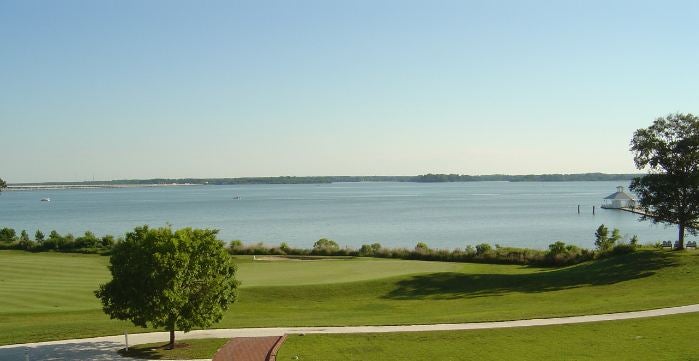Por Coral Fernandez Illescas*
 A few weeks ago we were visiting DC Water Blue Plains Advanced Wastewater Treatment Plant (the largest plant of its kind in the world!), when I heard the following words: Combined Sewer Overflows or CSOs. My heart skipped a beat, my ears perked up, and here it is: my very first blog!
A few weeks ago we were visiting DC Water Blue Plains Advanced Wastewater Treatment Plant (the largest plant of its kind in the world!), when I heard the following words: Combined Sewer Overflows or CSOs. My heart skipped a beat, my ears perked up, and here it is: my very first blog!
What is a combined sewer? It is a pipe carrying both wastewater and storm runoff. Modern practice is to build separate sewers and indeed no combined sewers have been built in the District since the early 1900s. However, one third of the District (12,478 acres) has a combined sewer because of the “flavor of the day” in 19th century America (i.e. by design and not by accident). During dry weather or during slow and steady rain, in the combined system, the sewage goes and happily gets treated at the Blue Plains Wastewater Treatment Plant.

But what happens when it rains too intensely or too heavily or when a lot of snow melts too quickly for the combined system to handle? CSOs!
What are CSOs? CSOs are excess flows when the capacity of the combined sewer is exceeded during storms. Currently, in an average year, CSOs direct about 2.5 billion gallons of combined untreated sewage directly into the Anacostia and Potomac rivers, and into Rock Creek.
What happens as a result? Discharges of CSO can negatively impact the quality of the receiving waters. As a result, the Anacostia and Potomac Rivers as well as Rock Creek do not always meet the water quality standards for primary contact recreation and so District Law prohibits primary contact recreation in each of the receiving waters … – There goes your swim! But also, this pollution continues on to Chesapeake Bay and the Atlantic Ocean.
What is being done about it? Many things! DC Water has already reduced CSOs to the Anacostia River by 40% with improvements to the existing sewer system. But also, have you heard about the DC Clean Rivers Project? Please keep reading!
What is the DC Clean Rivers Project? Since 2010, it is the name of DC Water’s Long Term Control Plan (LTCP) for CSOs such that water quality standards are met. By 2022, the Project intends to capture 98% of CSOs by building tunnels to store the combined sewage during rain events, releasing it to Blue Plains once the storms subside. The first and largest tunnel (of the three proposed) will serve the Anacostia River, built thanks to a giant tunnel boring machine named “Lady Bird” (after Claudia Alta “Lady Bird” Johnson, First Lady and wife of President Lyndon B. Johnson). It is 23 feet in diameter and will run more than 100 feet deep, along the Potomac and under the Anacostia. In addition to the two future tunnels (one serving the Potomac and one serving Rock Creek), green infrastructure such as trees, tree boxes, rain barrels, porous pavers, rain gardens, etc., is being proposed to control runoff. Go Green DC!
What is the goal? In the words of DC Water’s General Manager, George Hawkins, it is to have the Anacostia swimmable and fishable by 2032! I don’t know about you but I am looking forward to that swim in our beloved and clean urban waters!

Coral Fernandez Illescas is a @BIDagua specialist
Follow @coralpfi



Leave a Reply